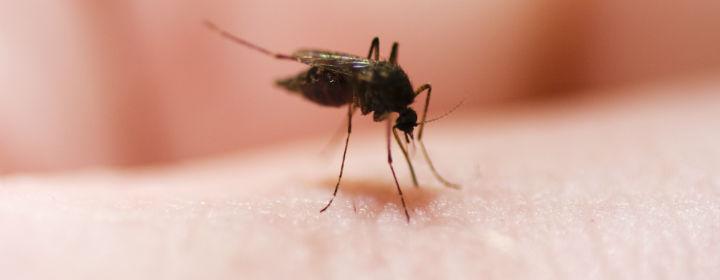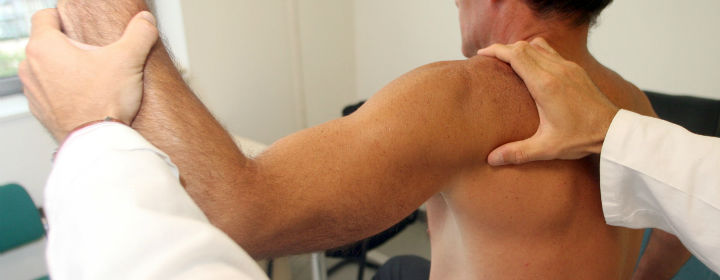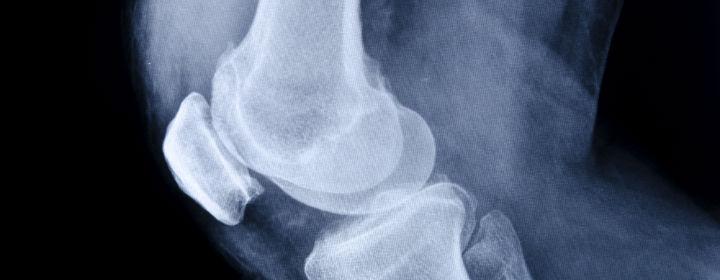Har du læst hæftet om Allicin, som fulgte med julenummeret af sund-forskning.dk? Nedenfor finder du listen over de bakterier, svampe, parasitter og vira, som allicin er blevet testet med. Listen er på engelsk. Der er også nævnt en række sygdomme, hvori disse forskellige mikroorganismer m.m. indgår. Det er ikke meningen, at du selv skal behandle disse sygdomme, men du kan bringe listen med til din behandler, og bruge allicin fra hvidløg som støtteterapi. Listerne her må ikke anvendes uden at hæftet “Allicin fra top til tå” er læst og forstået. Marianne Palm, efterår 2009.
Kilder og referencer til Allicin
Oxford Medical Dictionary Fourth Edition Darbyshire B., Henry R.J., Differences in fructan content and synthesis in some Alliumspecies, New Phytol. 87 (1981) 249-256. Koch H.P., Lawson L.D., Garlic, the science and therapeutic application of Allium sativum. And related species, in: Retford D.C. (Ed.), Williams and Wilkins, Baltimore, 1996, pp. 1-233. Cavallito C., Bailey J.H., Allicin, the antibacterial principle of Allium sativum. Isolation, physical properties and antibacterial action, J. Am. Chem. Soc. 66 (1944) 1944-1952. Block E., The chemistry of garlic and onion, Sc. Am. 252 (1985) 94-99. Stoll A., Seebeck E., Chemical investigations of alliin, and the specific principle of garlic, Adv. Enzymol. 11 (1951) 377-400. Ellmore G.S., Feldberg R.S., Alliin lyase localisation in bundle sheaths of garlic clove ( Allium sativum), Am. J. Bat. 81(1994) 89-94. Rabinkov A., Xiao-Zhu Z., Grafl G., Galili G., Mirelman D., Alum lyase (alliinase) from garlic ( Allium sativum):Biochemical characterisation and cDNA cloning, Appl.Biochem.Biotechnol. 48 (1994) 149-171. Van Damme 5.3.24., Smeets K., Torrekens S., Van Leaven F., Peumans W.J., Isolation and characterisation of allinase cDNA clones from garlic ( Allium sativum L.) and related species, Eur.J. Biochem. 209 (1992) 751-757. Rabinkov A., Wilchek M., Mirelman D., Alumnae (alum lyase) from garlic ( Allium sativum) is glycosylated at ASN146 and forms a complex with a garlic mannosespecific lectin, Glyco conj. 3. 12 (1995) 690-698. Uchida Y., Takahashi T., Sato N., The characteristics of the antibacterial activity of garlic, Jpn J. Antibiotics 28 (1975) 638-642. Celiini L, Di Campli B., Masulli M., Di Bartolomeo S., Aliocati N., Inhibition of Helicobacter pylori by garlic extract ( Allium sativum), FEMS Immenol. Med. Micrbiol 13 (1996) 273-277 Gonzalez-Fandos F., Garcia-Lopez Mi.., Sierra Mi., Otero A., Staphylococcal growth and enterotoxins (A-D) and thermonuclease synthesis in the presence of dehydrated garlic, J. Appl. Bacteriol. 77 (1994) 549-552. Girnenez MA., Solanes RE., Girneriez D.F., Growth of Clostridium botulinum in media with garlic, Rev. Argent. Microbioi. 20 (1988) 17-24. Holzgartner H, Schmidt U, Kuhn U Congress Abstract Eur Jnl Clin Res 3A 1992:8 Brosche T and Platt D (1991) Garlic BMJ; 303; 785 Rabinkov A.,. Miron T., Konsrantinovski L., Wilchek M., Mirelman D., Weiner L., The mode of action of allicin: trapping of radicals and interaction with thiol containing proteins, Biochim. Biophys. Acts 1379 (1998) 233-244. Abdullah TH, Kirkpatrick DH, Carter J; Enhancement of Natural Killer Cell activity in AIDS patients; D Z Onkologie 21;52-53 Josling P Advances in Natural Therapy (2001) 18; 189-193 Steinmetz et al., (1994) Vegetable fruit and colon cancer in The IOWA Women’s Health Study. Am. J. Epidemiol. 139: 1-15. Eccles R. Common Cold Centre Cardiff. Koch and Lawson in Garlic – The Science and Therapeutic Application of Allium Sativum L and Related Species. Williams & Wilkins; 1996. Ankri & Mirelman. Microbes Infect. 1999;2:125-129. Hanley & Fenwick. J Plant Foods. 1985;6:211-238. Data on file. Garlic Centre, East Sussex, UK. Chambers HF. Methicillin resistance in staphylococci: molecular and biochemical basis and clinical implications. Clin Microbiol Rev 1997; 10: 781–91. Perez-Roth E, Claverie-Martin F, Batista N, Moreno A, Mendez- Alvarez S. Mupirocin resistance in methicillin-resistant Staphylococcus aureus clinical isolates in a Spanish hospital. Co-application of multiplex PCR assay and conventional microbiology methods. Microbiol Infect Dis 2002; 43: 123–8. Livermore DM. Antibiotic resistance in staphylococci. Int J Antimicrob Agents 2000; 16: 3–10. Schentag JJ, Hyatt M, Carr J et al. Genesis of methicillin-resistant Staphylococcus aureus (MRSA), how treatment of MRSA infections has selected for vancomycin-resistent Enterococcus faecium and the importance of antibiotic management and infection control. Clin Infect Dis 1998; 26: 1204–14. Walker ES, Vasquez JE, Dula R, Bullock H, Sarubbi FA. Mupirocin-resistant, methicillin-resistant Staphylococcus aureus: does Mupirocin remain effective? Infect Control Hosp Epidemiol 2003; 24: 342–6. Cavallito C, Bailey JH. Allicin, the antibacterial principal of Allium sativum. Isolation, physical properties and antibacterial action. J Am Chem Soc 1944; 66: 1944–52. Ankri S, Mirelman D. Antimicrobial properties of allicin from garlic. Microbes Infect 1999; 2: 125–9. Block E. The chemistry of garlic and onion. Sci Am 1985; 252: 94–9. Lawson LD, Wang ZJ, Hughes BG. Identification and HPLC of the sulphides and dialk(en)yl thiosulphinates in commercial garlic products. Planta Med 1991; 57: 363–70. Andrews JM. BSAC standardised disc susceptibility testing method. J Antimicrob Chemother 2001; 48 (Suppl S1): 5–16. Lorian V. Antibiotics in laboratory medicine. Baltimore: Williams and Wilkins, 1980. Schmitz FJ, Jones ME. Antibiotics for treatment of infections caused by MRSA and elimination of MRSA carriage. What are the choices? Int J Antimicrob Agents 1997; 9: 1–19. Lawson LD. The composition and chemistry of garlic cloves and processed garlic. In: Koch HP, Lawson LD, eds. Garlic: the science and therapeutic application of Allium sativum L and related species (2nd edn). Baltimore: Williams and Wilkins, 1996: 37–107. Block E. The organosulphur chemistry of the genus Allium: implications for the organic chemistry of sulphur. Angew Chem Int Ed Engl 1992; 31: 1135–78. Lawson LD, Wang ZYJ. Changes in the organosulphur compounds released from garlic during aging in water, dilute ethanol or dilute acetic acid. J Toxicol 1995; 14: 214. Hughes BG, Lawson LD. Antimicrobial effects of Allium sativum L (garlic), Allium ampeloprasum (elephant garlic) and Allium cepa L (onion), garlic compounds and commercial garlic supplement products. Phytotherapy Research 1991; 5: 154–8. Feldberg RS, Chang SC, Kotic AN et al. In vitro mechanism of inhibition of bacterial cell growth by allicin. Antimicrob Agents Chemother 1988; 32: 1763–8. Focke M, Feld A, Lichrenthaler K. Allicin, a naturally occurring antibiotic from garlic, specifically inhibits acetyl-CoA synthetase EBS Lett 1990; 261: 106–8 Ozolin ON, Uteshev TA, Kim IA, Deev AA, Kamzolova SG. Specific modification of the alpha-subunit of Escherichia coli RNAS polymerase by monomercuric derivative of flourescein mercuric acetate. Mol Biol (Mosk) 1990; 24: 1057–66. Cederna JE, Terpenning MS, Ensberg M, Bradley SF, Kauffman CA. Staphylococcus aureus nasal colonization in a nursing home: eradication with Mupirocin. Infect Control Hosp Epidemiol 1990; Reed E. Burns, Gerald W. Hayes Jr., Jose D. Diaz and Thomas B. Dowda III Division of Plant Industry, Fl
orida Department of Agriculture and Consumer Services Gainesville, Florida Table 1 Bacterial infections against which Allisure® allicin powder, cream or liquid may be effective (all with very low concentrations required to prevent infection). This very wide range of sensitive bacterial species shows just how Allicin can help to revolutionize the treatment of infectious diseases. · Acinetobacter baumanii · Acinetobacter calcoaceticus · Escherichia coli · Bacillus cereus · Bacillus subtilis · Campylobacter jejuni · Camplylobacter fetus · Camplylobacter coli · Campylobacter doylei · Campylobacter hyointestinalis · Campylobacter ureolyticus · Campylobacter mucosalis · Campylobacter helveticus · Clostridium difficile · Citrobacter spp. · Hafnia spp · Provindencia spp. · Micrococcus · Mycobacterium tuberculosis · Mycobacterium leprae · Mycobacterium bovis · Mycobacterium kansasii · Helicobacter pylori · Cornyebacterium spp. · Pasteurella spp. · Cryptococcus spp. · Salmonella typhimurium · Salmonella dublinii · Salmonella enteriditis · Shigella · Bacillus anthracis · MRSA (Methicillin resistant staphylococcus aureus) · GISA (Glycopeptide intermediate resistant staphylococcus aureus) · VISA (Vancomycin intermediate resistant staphylococcus aureus) · Staphylococcus aureus in skin disease · Streptococcus pyogenes (flesh eating bacteria) · Klebsiella aerogenes · Saccharomyces cerevisiae *Meningitis · Cholera · Listeria monocytogenes · Enterococcus faecium · Pseudomonas aeroginosa · Proteus mirabilis · Nesseria Gonorrhea · Clostridium perfringens · Chlamydia · Haemophilus Influenza · Enterococcus histolytica · · · Direct observation reported in Scientific literature or personal communication to the author Table 2 Fungal and dermatophyte infections against which Allisure® allicin powder, cream or liquid may be effective. · Athlete’s foot · Candida albicans · Aspergillus fumigatus · Aspergillus niger · Rhizopus nigricans · Mucor racemosus · Didium lactus · Coccidioides immitis (Valley Fever) · Torilopsum spp. · Rhodotorula spp. · Trichosporon spp. · Auxarthron zufiianum · Uncinocarpus resii · Fusarium laceratum · Geotrichum candidum · Trichoderma hamatum · Trichophyton cerebriforme · Trichophyton granulosum · Trichophyton terrestre · Malbranchea pulchella · Chrysosporium tropicum · Microsporum canis · Aspergillus parasiticus · Aspergillus ochraceus · Penicillum spp. · Microsporum gypseum · Saccharomyces spp. · Kloeckera apiculata · Oospora lactis · Penicillium notatum · Cryptococcus neoformans · Microsporum canis · Epidermaphyton mentagrophytes · Aspergillus flavus · Parracoccoides brasiliensis · Ringworm · Histoplasma capsulatum · · · Direct observation reported in Scientific literature or personal communication to the author Table 3 Parasitic disease against which Allisure® allicin powder, liquid or crème may be useful. · Amoebic dysentery · Cryptosporidium · Giardiasis · Toxoplasmosis · Leishmaniasis · Malaria · Oxyuriasis (pin worm infestation) · Hookworm · Tapeworms · Echinococcus · Trichomonas · Round worm (Ascaris strongyloides) · Shistomiasis · Filariasis Intestinal flukes · Liver flukes · Lung flukes · Head lice · Lyme Disease · · Direct observation reported in Scientific literature or personal communication to the author Table 4 Viral infections against which Allisure® allicin powder, liquid and crème may be effective. · Influenza A · Common Rhinovirus (Cold infection) · Influenza B · Coxiella burnetii (Q-Fever) · Pneumonia · Severe acute Respiratory Syndrome (SARS) · Cytomegalovirus · Pox virus · Parvovirus · Herpes Simplex Type 1 & 2 (Cold Sores) · Herpes Zoster (Shingles) · Warts · Flu · Croup · Chicken Pox · Vaccinia virus · Variola virus · Vesicular Stomatitis virus · · · Direct observation reported in Scientific literature or personal communication to the author · · Table 5 Other diseases against which Allisure® allicin powder, liquid or crème may be useful. · Takayasu’s disease · Elevated blood pressure · Elevated cholesterol · Raynaud’s disease · Rocky Mountain Spotted Fever · Multiple Sclerosis · Chronic fatigue syndrome · Fibromyalgia · Labyrinthritis · Giardiasis · Pneumonia · Genital herpes · · Direct observation reported in Scientific literature or personal communication to the author






Wow, wonderful blog structure! How long have you ever been running a blog for?
you made blogging look easy. The full glance of your website is wonderful, let alone the content!
You can see similar here e-commerce